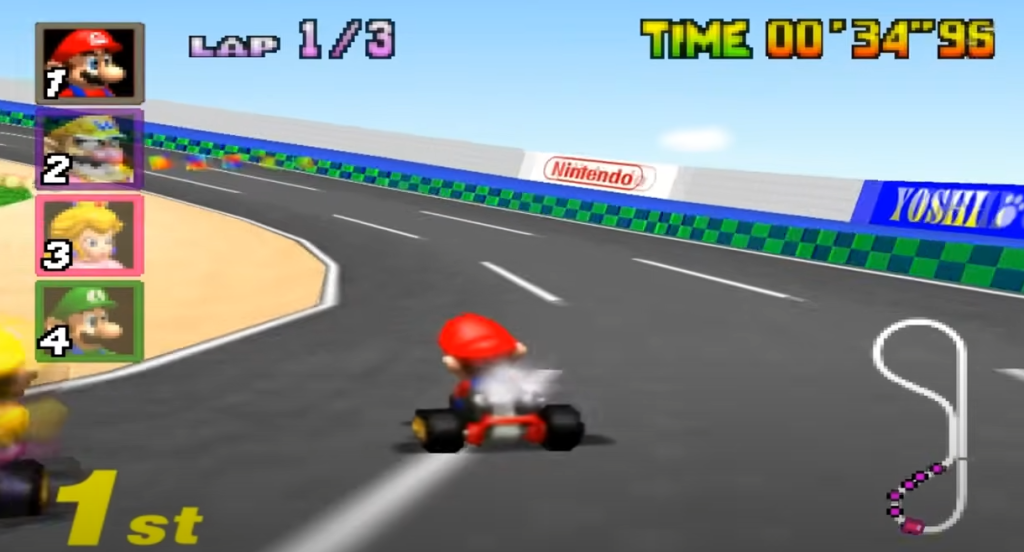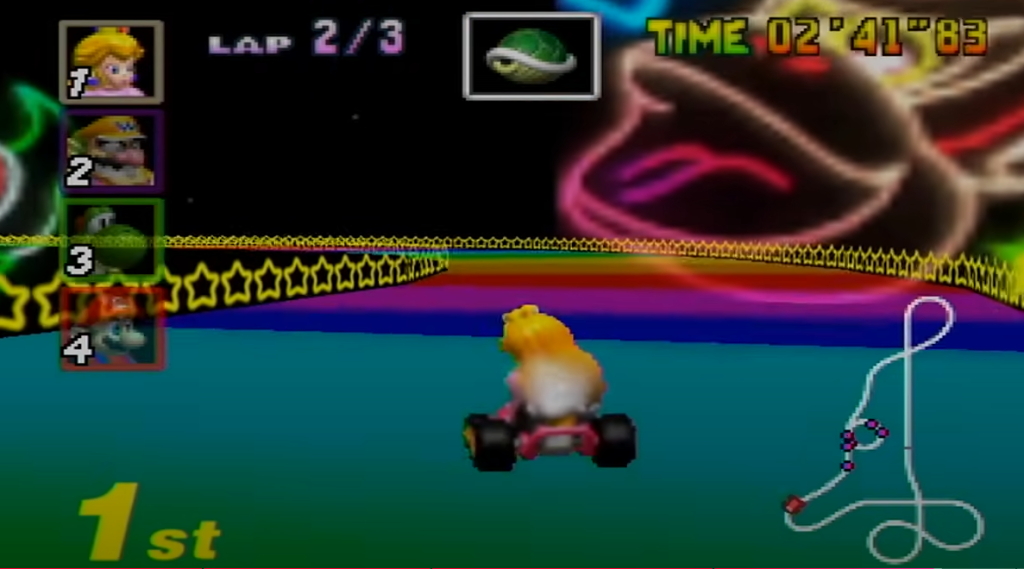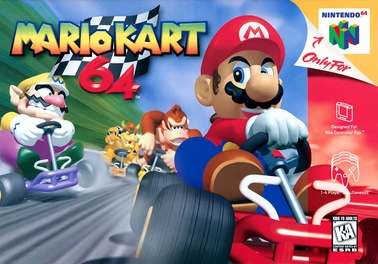Mario Kart 64, released in 1996 for the Nintendo 64, is the follow-up to the classic Super Mario Kart and Mario Kart: Super Circuit, and it helped define kart racing games on 3D platforms. Building on its SNES predecessor’s success, Mario Kart 64 introduced a fully 3D environment, new power-ups, and a multiplayer mode that made it a hit at parties and gaming sessions.
Gameplay
Mario Kart 64 is a kart racing game featuring beloved characters from the Mario universe, such as Mario, Luigi, Princess Peach, Yoshi, and Bowser. The game offers multiple racing modes, including Grand Prix, Time Trials, and Battle Mode, with up to four players racing simultaneously. The main focus is on speed, drifting, and using power-ups like bananas, shells, and the infamous Lightning Bolt to sabotage opponents.
The core gameplay remains familiar with tight controls, fun boosts, and plenty of weapon-based chaos. Power-ups are scattered throughout the tracks, allowing for moments of strategic advantage or the chance to thwart your opponents. The track design is varied and fun, featuring themed levels like the icy slopes of Frappe Snowland or the twisting tracks of Banshee Boardwalk.

Multiplayer
Where Mario Kart 64 truly shines is in its multiplayer. The game supports up to four players via split-screen racing, and the intense action mixed with friendly competition creates unforgettable moments. Whether you’re racing to the finish line or engaging in the chaotic mayhem of Battle Mode (where players aim to pop each other’s balloons), the multiplayer experience remains a standout feature, even decades later.
However, the split-screen can become a bit crowded on larger TV screens, and the graphics, while impressive at the time, can feel a little dated today.
Graphics and Sound
The transition to 3D was a major leap for the series, and while Mario Kart 64’s graphics were groundbreaking at the time, they haven’t aged as well. The colorful environments and character models are charming but feel blocky by today’s standards. Still, the whimsical nature of the designs and the vibrant tracks make it a fun visual experience. The animations of characters like Bowser’s monstrous cart or Yoshi’s cheerful speed are delightful, adding to the personality of the game.
The soundtrack is a highlight, with catchy tunes that enhance the lively atmosphere. From the cheerful opening track to the energetic racing themes, the music perfectly complements the game’s playful spirit. The sound effects are equally iconic, especially the “woo-hoo!” of Mario or the honking of Donkey Kong’s horn.

Legacy
Mario Kart 64 solidified the franchise as a leader in kart racing games. Its multiplayer experience became the gold standard for local competitive play, influencing not only future Mario Kart titles but also other kart racers like Crash Team Racing and Diddy Kong Racing. The game’s influence on gaming culture—particularly the rise of party games—has been significant.
It also introduced new gameplay mechanics that would become staples in the series, such as 3D tracks and the ability to hop and drift, which would be refined in later titles. While the controls can be somewhat finicky compared to modern Mario Kart titles, the nostalgic value and fun factor still hold up.

Verdict
Mario Kart 64 is a beloved classic that captures the chaotic, fun-filled spirit of racing. Its impact on multiplayer gaming and kart racing remains significant, and while it shows its age, it still delivers plenty of joy for those revisiting it. Whether you’re playing solo or with friends, Mario Kart 64 is a must-play for fans of the series and a defining title for the Nintendo 64.
Score: 8.5/10
